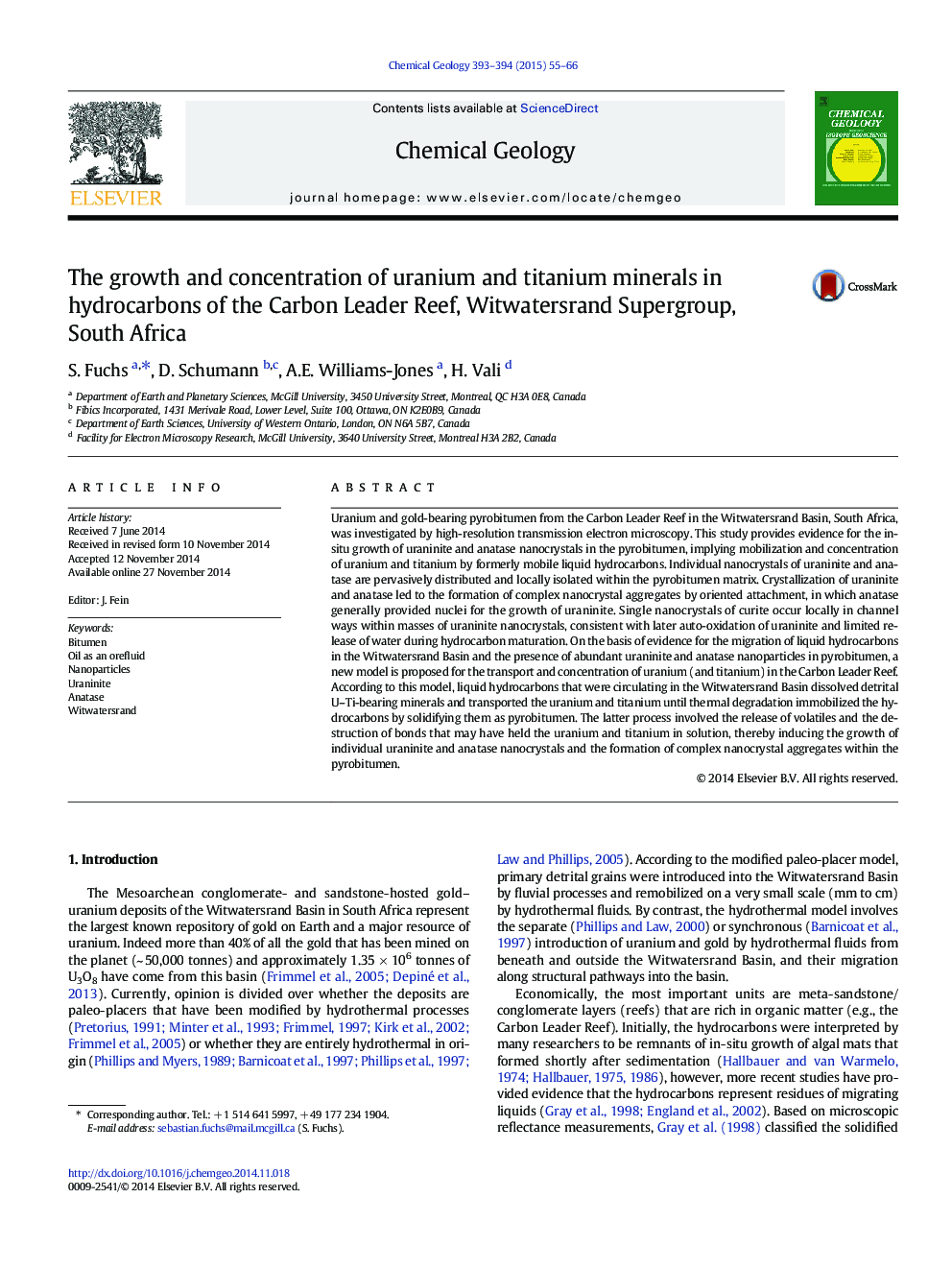| Article ID | Journal | Published Year | Pages | File Type |
|---|---|---|---|---|
| 6436487 | Chemical Geology | 2015 | 12 Pages |
â¢High-resolution transmission electron microscopic study of Witwatersrand pyrobitumenâ¢Nanocrystals of uraninite and anatase are common in the pyrobitumen matrix.â¢Complex nanocrystal aggregates were the result of growth by oriented attachment.â¢This study provides evidence for in-situ formation of uraninite and anatase.â¢Hydrocarbons mobilized U and Ti and concentrated them as uraninite and anatase.
Uranium and gold-bearing pyrobitumen from the Carbon Leader Reef in the Witwatersrand Basin, South Africa, was investigated by high-resolution transmission electron microscopy. This study provides evidence for the in-situ growth of uraninite and anatase nanocrystals in the pyrobitumen, implying mobilization and concentration of uranium and titanium by formerly mobile liquid hydrocarbons. Individual nanocrystals of uraninite and anatase are pervasively distributed and locally isolated within the pyrobitumen matrix. Crystallization of uraninite and anatase led to the formation of complex nanocrystal aggregates by oriented attachment, in which anatase generally provided nuclei for the growth of uraninite. Single nanocrystals of curite occur locally in channel ways within masses of uraninite nanocrystals, consistent with later auto-oxidation of uraninite and limited release of water during hydrocarbon maturation. On the basis of evidence for the migration of liquid hydrocarbons in the Witwatersrand Basin and the presence of abundant uraninite and anatase nanoparticles in pyrobitumen, a new model is proposed for the transport and concentration of uranium (and titanium) in the Carbon Leader Reef. According to this model, liquid hydrocarbons that were circulating in the Witwatersrand Basin dissolved detrital U-Ti-bearing minerals and transported the uranium and titanium until thermal degradation immobilized the hydrocarbons by solidifying them as pyrobitumen. The latter process involved the release of volatiles and the destruction of bonds that may have held the uranium and titanium in solution, thereby inducing the growth of individual uraninite and anatase nanocrystals and the formation of complex nanocrystal aggregates within the pyrobitumen.
